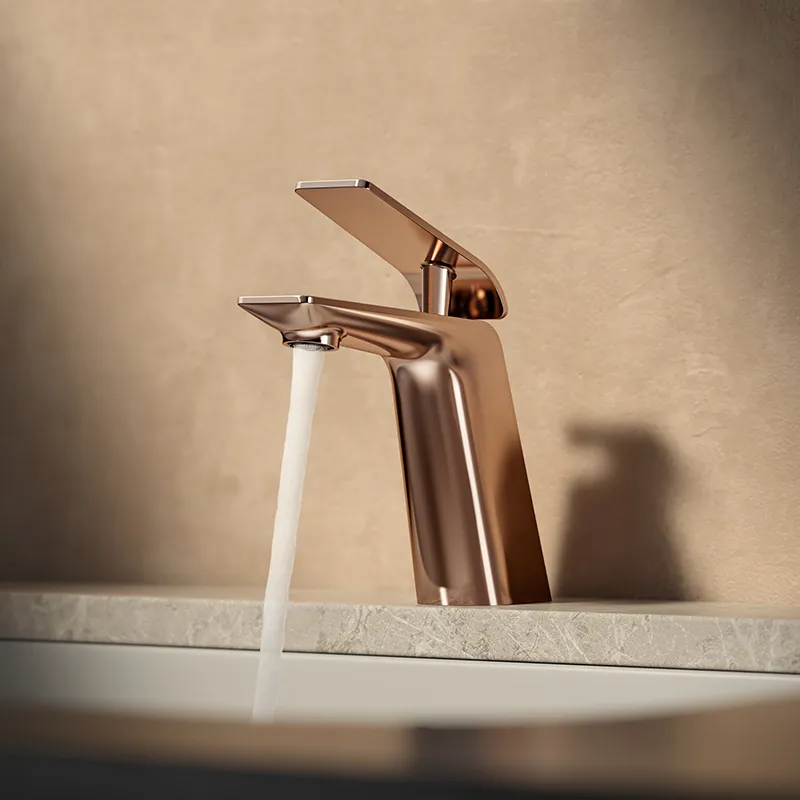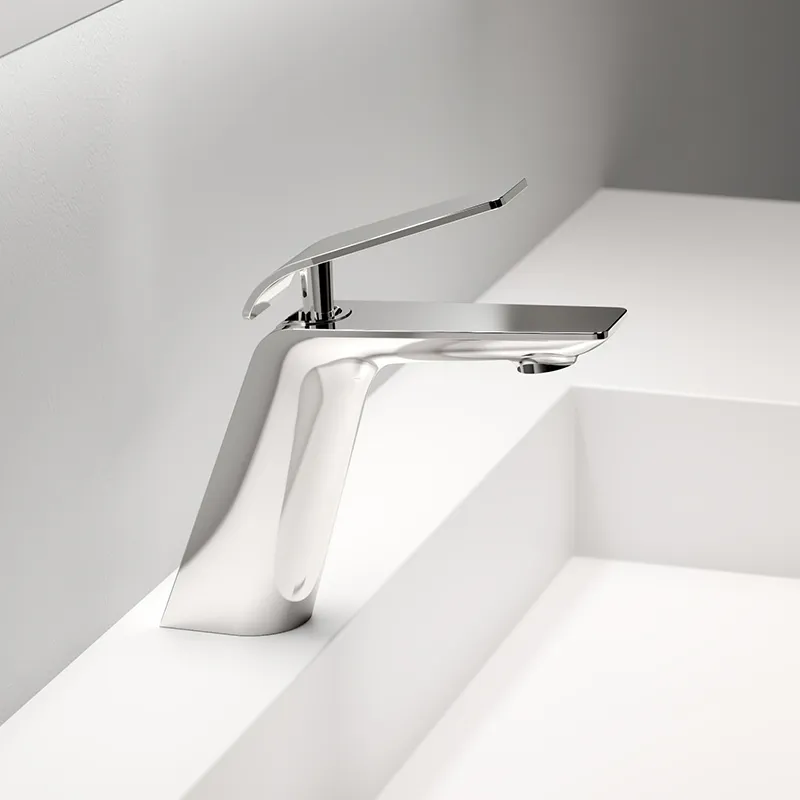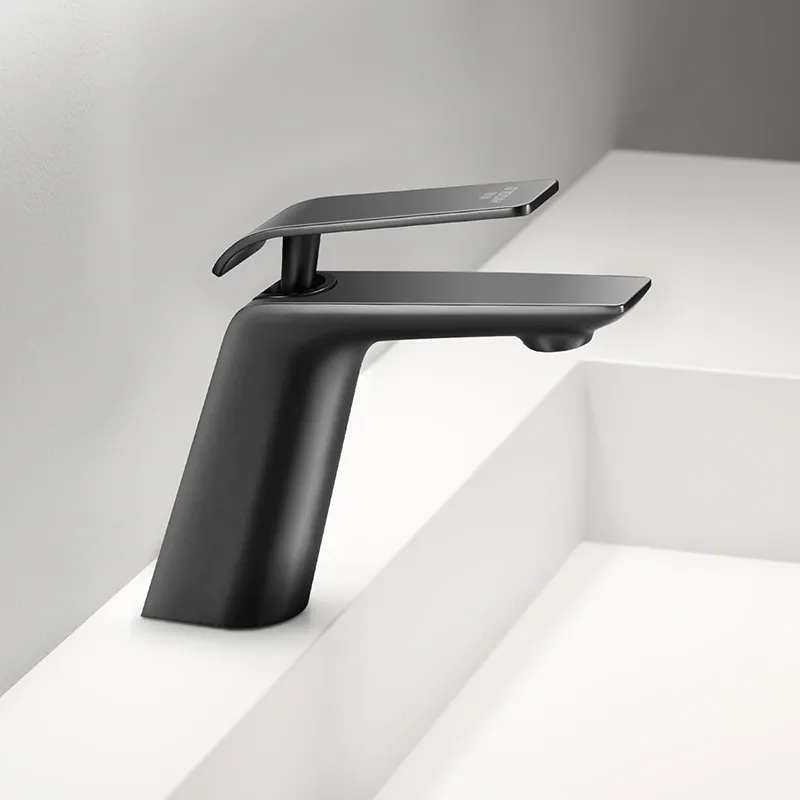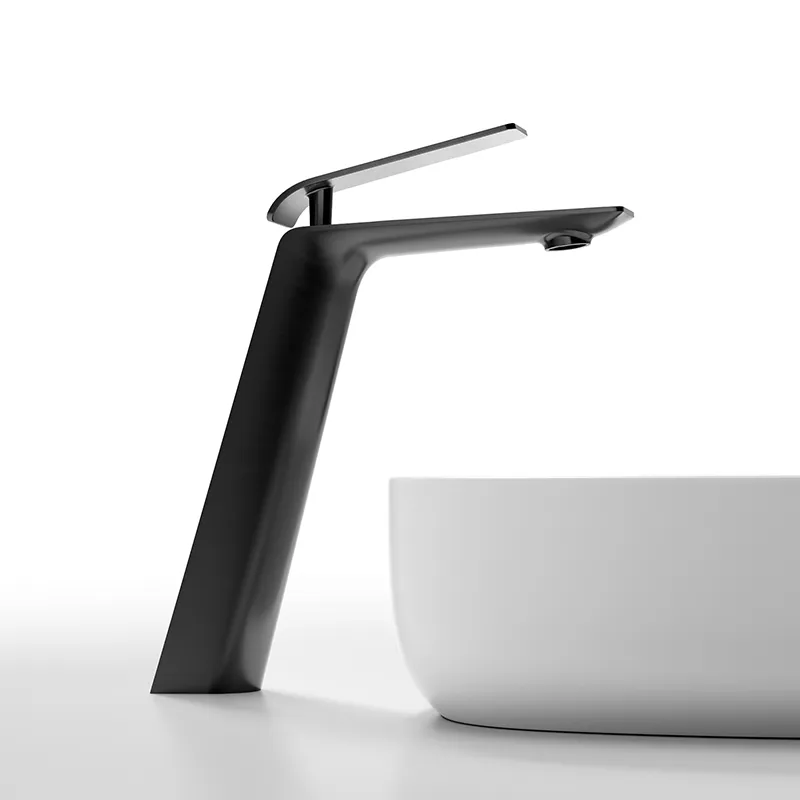In modern bathroom design, the bathroom sink is an indispensable fixture in every home and public space. A sink's function goes beyond simply receiving water. Its height, size, and shape directly impact washing comfort and ease of use.
The matching faucet is equally crucial, determining water flow, temperature control, hygiene and safety, and user experience. Generally, a basin faucet is the best choice for a bathroom sink.
This article will address the question of "Which faucet is suitable for a bathroom sink? Basin faucet." It will comprehensively analyze the definition, features, materials, installation methods, advantages and disadvantages, and key purchasing considerations of basin faucets, helping readers make informed and informed choices about bathroom sink faucets.

What is a basin faucet?
A basin faucet is a faucet installed specifically on a bathroom sink, providing hot and cold water for daily necessities such as washing hands, face, brushing teeth, and cleaning small items. Compared to kitchen sink faucets, basin faucets place greater emphasis on ergonomic design, water flow comfort, and hygiene and safety.
A basin faucet typically includes the following core components:
• Valve cartridge: Controls water flow and temperature, determining operational feel and durability. Ceramic valve cartridges are commonly used, offering wear resistance and high sealing performance.
• Spout: The height, length, and angle of the water outlet influence water flow coverage and user comfort.
• Faucet body: Supports the valve cartridge and spout and contributes to the overall aesthetic.
• Handle or knob: Used to adjust water flow and temperature, available in a variety of styles, including single-handle, double-handle, and sensor-activated controls.
The design concept of a basin faucet is to combine functionality, comfort, and aesthetics to provide the optimal bathroom sink experience.

What are the characteristics and requirements of a bathroom sink?
1. Function of a bathroom sink
A bathroom sink is the primary water source in the bathroom. Its primary functions include washing hands, face, brushing teeth, and cleaning small items. Unlike kitchen sinks, bathroom sinks are typically smaller and of moderate depth, designed to balance aesthetics and practicality.
2. Bathroom Sink Size and Height
Bathroom sinks are typically 80 to 85 cm high. Common sizes for above- and under-counter basins are 40-60 cm long and 30-45 cm wide. The size and depth of the sink determine the height and angle of the basin faucet. A faucet that is too high or too low will affect the washing experience.
3. Bathroom Sink Usage Scenarios
• Bathroom sinks are primarily used for:
• Daily hand washing, face washing, and brushing teeth
• Washing small amounts of laundry or small items
• Preparing for washing, such as washing fruit or small dishes (some bathroom sinks also serve this function)
Therefore, when choosing a faucet, consider water flow, temperature control comfort, and splash protection to meet these diverse needs.

What are the functions of a basin faucet?
1. Temperature Control
Basin faucets typically feature hot and cold water control, allowing users to adjust the water temperature to their needs. Basin faucets with ceramic valve cartridges offer smooth and durable operation, precisely controlling water flow and temperature, providing a comfortable bathroom sink experience.
2. Water Dispenser
Basin faucets offer a variety of water dispensing methods, including direct flow, air-injected flow, and sensor-activated flow. Air-injected flow increases the fullness of the water flow while reducing water flow, conserving water. Sensor-activated faucets use infrared to control water flow, enhancing hygiene and ease of use.
3. Height and Angle Design
The height and angle of the basin faucet should match the bathroom sink to ensure it does not hit the rim and splash water. The water outlet should be at the right height for comfortable hand and face washing.
4. Splash-Proof and Hygienic Design
Modern basin faucets are designed to be splash-proof and utilize antimicrobial materials or coatings to reduce bacterial growth. This design significantly improves hygiene and safety for both home bathrooms and public spaces.
5. Easy Installation and Maintenance
Basin faucets are typically installed with a single or three-hole design. The valve core is removable and replaceable, and the spout is easy to clean. Installation and maintenance are relatively simple, meeting the needs of daily household use and maintenance.
How to choose the material for a basin faucet?
The material directly affects the durability, hygiene, and aesthetics of a basin faucet.
1. Copper Basin Faucet
Copper is corrosion-resistant and wear-resistant, and can be chrome- or nickel-plated to enhance its surface gloss and antibacterial properties. Copper basin faucets are suitable for frequent daily use and have a long lifespan.
2. Stainless Steel Basin Faucet
Stainless steel is corrosion-resistant, heat-resistant, and easy to clean. It has a natural gloss and is easy to maintain, making it suitable for modern, minimalist bathrooms.
3. Alloy and Composite Faucets
Basin faucets made of zinc alloy or high-strength plastic are less expensive, but their durability and corrosion resistance are slightly inferior to copper and stainless steel. They're suitable for families on a budget, but they require careful maintenance for long-term use.

What are the installation methods for basin faucets?
1. Single-Hole Installation
A single-hole basin faucet integrates hot and cold water controls into a single handle, allowing you to adjust the water temperature and flow rate by twisting or pulling. This single-hole installation is easy to operate and clean, making it ideal for smaller bathroom sinks.
2. Three-Hole Installation
A three-hole basin faucet includes separate hot and cold water valves and spouts, making it suitable for larger basins or those who prefer independent hot and cold water control. It offers a stable installation but takes up more space in the basin.
3. Above-Counter and Under-Counter Installation
A basin faucet can be installed in either an above-counter or under-counter basin. The installation method should match the type of bathroom sink to ensure aesthetics and comfort.
What are the advantages and disadvantages of a basin faucet?
Advantages of a basin faucet:
• Comfortable operation: Smooth temperature control and steady water flow make it comfortable to use.
• Hygienic and safe: Splash-proof design and antibacterial materials reduce bacterial growth.
• Aesthetically pleasing: A variety of designs coordinate with bathroom decor.
• Water-saving: Some models use air injection or sensor-controlled water flow to reduce water consumption.
• Easy maintenance: The valve cartridge is removable, making the water outlet easy to clean.
Disadvantages of a basin faucet:
• Relatively high cost: High-quality basin faucets are more expensive than ordinary faucets.
• Moderate water flow: Not suitable for large-scale cleaning, only suitable for daily bathroom needs.
• Space limitations: Three-hole or large faucets require more space in the basin.
Suggestions for choosing a basin faucet that matches your bathroom sink
1. Match sink size: Choose a basin faucet with a spout height and angle that matches your bathroom sink size.
2. Material priority: Choose a copper or stainless steel basin faucet for both durability and hygiene.
3. Functionality: Choose a single-handle, two-handle, or sensor-activated faucet based on your needs.
4. Installation: Ensure the faucet's installation method matches your sink type.
5. Brand and After-Sales Service: Choose a reputable brand with comprehensive after-sales service (Higold) to ensure long-term user experience.
"What faucet is suitable for a bathroom sink?"
The answer is clear: a basin faucet is the best choice. Basin faucets offer an optimized bathroom sink experience through temperature control, water outlet design, splash protection, and material selection. Basin faucets not only meet daily washing needs but also perfectly complement the bathroom sink in terms of operational comfort, hygiene, safety, and overall aesthetics, providing a premium user experience and convenience for modern bathroom spaces.
How does Higold integrate R&D with manufacturing?
Higold combines independent research and development with advanced production facilities to ensure every kitchen sink reflects innovation and precision. Our ODM services help global partners launch customized products at wholesale prices. As a China-based supplier, Higold provides both high quality sinks and flexible purchasing options for international customers.


